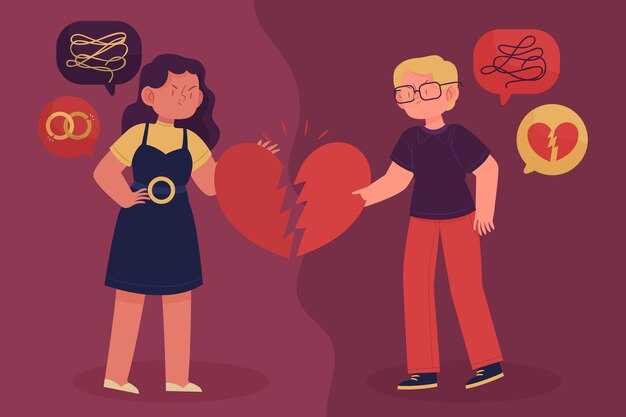The first time I ran across the phrase “emotional sobriety,” it shook me — not because I didn’t understand the words, but because it sounded like a skill I didn’t possess yet desperately wanted. My struggle was never with alcohol or drugs; it was with unresolved childhood trauma. That history upended my life in ways that felt remarkably like addiction: chronic exhaustion, lateness, quick temper, persistent sadness. Back then there wasn’t a widely used name for what happens to people who were hurt as children, so I assumed it was just me. I felt ashamed and uncertain if change was even possible. Still, the idea of emotional sobriety felt powerful and desirable. I wanted it.
In recovery communities for substance abuse, sobriety means more than abstaining from intoxication. It describes a mental and emotional steadiness — a calm, balanced state that reduces the chance of relapse. Intense feelings, whether painful or euphoric, often trigger a return to using. For anyone who’s battled addiction, staying sober is often about protecting oneself from experiences that might stir overwhelming emotions, at least in the early months. That can mean steering clear of risky behaviors that lead to emotional storms — fights, casual hookups, loneliness, secretive acts that make you lie or steal. The rule is simple: keep life steady when strong emotions could push you toward a drink or a drug.
But what about people healing from childhood trauma? What does relapse look like for us? I’d call it slipping into emotional or neurological dysregulation — that state our brains can fall into when CPTSD gets triggered. Dysregulation might appear as a torrent of negative feelings, a foggy dissociation, or a frantic hyperexcitement about money, romance, or some thrill. It’s not chemical intoxication, but it can mirror the loss of judgment, volatility, and boundary breakdown you’d see in someone who’s drunk or high. If you recognize this, there’s a self-assessment quiz on the free tools page of my website that lists common symptoms; I link to that free tools page in the description below my videos.
Though dysregulation and intoxication differ, trauma and addiction are related: trauma often correlates with later addiction. Some thinkers even argue that addiction grows from trauma, though not everyone agrees. One clear distinction: addictions involve an ingestible agent — a substance that causes intoxication when consumed. Trauma’s “active ingredient” is usually an experience or behavior that triggers a reaction — someone yelling, for example — and because of past wounds, the emotional response can be far larger than the situation merits. Without any conscious choice, you can slide into dysregulation — a feeling many survivors will find painfully familiar.
So how can a person with CPTSD guard against those relapses and build emotional sobriety? A key first step is to be wary of negative thinking and feelings that can snowball. You can acknowledge being sad or angry without diving headfirst into those states. Many trauma therapies encourage diving into painful emotions — and sometimes that’s important — but there’s also a place for healthy compartmentalization when dealing with traumatic memories. Small irritations might be safe to feel fully; overwhelming hurts may need to be held at arm’s length until you have the capacity to process them. That doesn’t mean shutting down altogether — that would be denial — but having some discretion about when to open your heart fully is part of emotional sobriety.
Avoiding triggers where possible is practical. While you’re actively healing, it may not be the time to launch a new romantic relationship or run for public office. Focus on calm, grounding activities: exercise, time outdoors, staying away from high-drama people or the 24-hour news cycle. A simple anger can balloon into rage when you’re triggered, and that thin emotional ice can result in saying something you’ll regret and days of destabilization afterwards. Conversely, seemingly positive triggers — an unexpected romantic text or a surprise check — can produce giddy elation that also spirals into dysregulation, followed by depression, anxiety, brain fog, or obsession. Emotional sobriety is about being mindful of intense emotions, both good and bad, learning to dodge likely triggers while also training your nervous system to calm down when triggered.
There’s often a sequence: a sharp emotional reaction, a period of dysregulation, and then recovery. One real win is catching a slip early and preventing it from cascading into a long episode. Falling then getting back up is practice; it’s how you learn to use your tools. But if you hide from life entirely to avoid the chance of dysregulation, you lose the opportunity to practice. You can’t avoid every trigger — life throws them at you unexpectedly: a near-miss with a car, waking up already flooded with emotion (an emotional flashback). You can’t stop living, but you can learn to notice and arrest the emotional reaction that follows. That’s hard, but possible.
People who suffered abuse or neglect as children tend to show recurring emotional patterns: fear (abandonment panic), anger, a sense of injustice, feeling overlooked or rejected, jealousy, and especially shame. A small thought like “I said the wrong thing” can snowball into “I’m worthless and will be alone forever.” That self-attack can spill into hurtful behavior toward others, provoking retaliation and escalation until feelings run wild and lose connection with the original event. Sound familiar?
Emotional sobriety isn’t about numbing feelings; it’s about intercepting the slide from a reasonable emotional response into a full-blown meltdown. Gaining some control takes time, conversation, trial and error, tolerance for setbacks, and support from people whose judgment you trust. The healing cycle includes falling, recovering, and trying again. You might resent that others around you seem to let themselves go emotionally without obvious consequences — they yell, leap into one-night romances, or binge on comfort food and seem fine. Don’t be fooled. Pausing and tempering impulses serves most people well. For those with CPTSD, that pause is crucial. The more days you go without exploding or making impulsive choices, the more your inner baseline stabilizes and the easier it becomes to insert that pause between trigger and reaction.
Like addictions, emotional sobriety is fragile. You can go years without an outburst and then misjudge your strength and jump into that “instant relationship” or roar at another driver, and suddenly your shame and dysregulation return, often with more intensity. In Alcoholics Anonymous, alcoholism is described as progressive and fatal: someone can be sober for years, relapse, and find the return to drinking much more severe. Emotional sobriety can be vulnerable in the same way. One angry episode can feel worse than it did before, and the shame that follows can be a brutal teacher.
When you sense you’re in the danger zone — when those gateway emotions appear — act immediately to step back. Don’t make hasty, sweeping declarations. Run your reaction by a trusted friend. Use grounding measures like the daily practice I teach — techniques to release emotional residue and regain clarity. Move, shower, dance, bite a lemon — anything that gives your nervous system a tangible sensory nudge. Some people will insist you’re doing therapy wrong if you don’t dive deeper into anger or grief, but do they understand the role of dysregulation in complex trauma? Have they become the Incredible Hulk when triggered? You’re discovering what works for you. Triggers never stop, but as you grow emotionally sober you’ll notice signs: you maintain a generally positive outlook even when life is hard; you speak honestly rather than manipulate out of fear; you’re comfortable alone and with others; you can say no without people-pleasing; you can help others without feeling compelled to fix them; you date more slowly to assess compatibility and step away from red flags; you cry without falling into an emotional black hole; you stand up for yourself calmly or accept when someone won’t reconcile. You’ll meet your own needs rather than making others responsible for your survival, and you’ll ask for help when you need it.
Self-care matters: enough sleep, exercise, good food, and social contact. Over time you’ll gain confidence in your ability to handle what life brings. There’s a common injunction to “feel your feelings,” and while some people benefit from that, childhood PTSD often produces the opposite problem: feeling emotions too intensely and too often. Emotional dysregulation — feelings that spike wildly or shut off completely — can be more destructive than being out of touch with your emotions. Dysregulation behaves like a wrecking ball or tornado that emerges seemingly from nowhere and wrecks relationships, jobs, and calm. Sometimes it manifests as dazzling intensity followed by a dead, flat blankness. With complex PTSD, that crash after an outburst is common. Whether it’s spikes or emptiness, dysregulated emotions are out of the human-scale range needed for steady communication. They can prompt words and deeds that create fresh wounds, trapping you in a vicious cycle.
Imagine a dinner where your partner shows up an hour late to guests you invited, and you’ve been frantic, calling and texting. You’re trying to appear composed in front of friends, but suddenly you can’t hold it in and explode. Old abandonment wounds flood your body and mind: chest tightness, a headache, panic. Your outburst ruins the evening, even though the guests were ready to forgive the mistake. Later you’ll realize your reaction was disproportionate — you became the person who spoiled the night. When it’s happening, it feels necessary; afterward, shame floods in and you may check out emotionally, go flat, and be unable to apologize. This pattern breaks relationships over time. It’s not your fault you learned this way; it’s common among survivors. Still, you can get better at catching yourself before you become that person. The goal is to develop skill at stopping ordinary emotions from escalating into “Incredible Hulk” crises.
Learning to regulate takes practice: conversations, trusted feedback, tolerance for mistakes, and support. It may sting when you see others act without restraint, yet pausing and restraint are strengths, not weaknesses. When you consistently avoid explosive reactions, you give yourself a growing inner freedom to pause between stimulus and response.
Here are practical tactics to use when you feel yourself tipping into a strong reaction. First, name it: “I’m having an emotional reaction.” That simple, grounding observation pulls you into reality. Slow the interaction down — take long pauses, choose your words deliberately, answer more slowly. Panic makes us rush, which makes things worse. Often, slowing things down is enough to reduce overwhelm and let perspective return. If tears feel imminent and you can’t show them, imagine a dial beneath your navel that controls emotional overflow. If it’s at an eight, turn it down to two. That mental image often stops the tears without shutting your feelings off completely. For anger, practice the old advice of restraint of pen and tongue: don’t say or write anything while hot. Sending messages or firing off emails in anger amplifies distortions and invites regret. If a conversation is important, postpone it with something simple: “I want to talk about this. Can we take 15 minutes so I can gather my thoughts?” Most people will accept a delay, and coming back regulated benefits everyone.
If you feel urgent to express yourself, that urgency often signals the need to take extra time. CPTSD can hijack a sense of emergency for things that aren’t actually life-or-death. Save true urgency for real crises — someone in danger or an abusive situation — but for matters of feeling, pausing 30 minutes, an hour, or even a day will usually help. Don’t underestimate how damaging it can be to try to solve problems while dysregulated. It’s like driving drunk.
Emergency writing is another powerful tool. In the daily practice I teach (a free course linked on my free tools page), there’s a structured way to dump fearful and resentful thoughts onto paper, then release them. This practice has changed lives: getting your emotions onto paper before you unleash them on another person prevents many destructive episodes. If you were neglected as a child you may have longed for someone to acknowledge your pain. But adults usually won’t respond to an angry outburst by repairing your nervous system, and it’s unrealistic to expect them to. Regulation is mostly an inside job. So write. You can do it anywhere: the bathroom, your car as a passenger, the middle of the night in bed, at your desk when emotions creep in. That brief act of release often makes you more productive and certainly prevents a meltdown.
Physical movement is another immediate recalibration: vigorous exercise, running up stairs, brisk walking — anything to sweat a little and flush stress hormones. Sometimes you must engage your body to calm your emotions when reasoning alone won’t cut it. Other tactile methods help too: wash your hands under warm, soapy water and feel the texture and temperature; splash cold water on your face. These sensory anchors bring you back into the room, into your body. When distress causes a kind of cognitive dimming — a trance or dissociation — grounding sensations help reconnect you to your senses and slow the runaway reaction.
A helpful metaphor a friend uses is to picture dysregulation as a plane taking off and regulating emotions as keeping the airplane on the ground. Once the plane is airborne, recovery is bigger and harder; the trick is to prevent takeoff in the first place. You can do this with practice: notice early signs (adrenaline, rapid breathing, rising panic), name what’s happening, and intervene.
If a conversation is making you worse — you’re talking louder and faster, interrupting, feeling more agitated — that’s a red flag that the exchange is escalating toward dysregulation. Politely pause, then take yourself to a private space with pen and paper or whatever tools calm you. Remember: talking while dysregulated can spread dysregulation to the other person, and two people in that state escalate quickly. Most things can be discussed later when both are calmer, clearer, and able to feel a range of emotions beyond anger.
When you’re re-regulating and intrusive intense thoughts keep popping up, deliberately hold onto them while shifting focus to constructive next steps. This is not toxic positivity — it’s redirecting runaway thinking toward a clearer mental space where you can act. Anchor yourself to the calm part of your mind that still has perspective and use it as home base. Postpone emotional expression until you’re steadier; talking will be more effective and relationships will stay intact.
People with childhood PTSD often fall into predictable patterns that push others away. One is disappearing: pretending you’re fine, then quietly withdrawing later. Imagine a friend casually announcing she’s going to Mexico with a new boyfriend — and forgetting the vague plan you once discussed. Your instant reaction might be to say “Great” and then vanish out of shame or fear, avoiding the difficult conversation entirely. That withdrawal looks like freezing or flight. You bottle things up and then ghost texts or ignore invitations. Over time this silence creates distance and damage.
Another pattern is exploding later: you suppress, then erupt with anger that showered your friend with accusations and harsh words. The well-intentioned attempt to hide pain becomes a lava flow that harms the relationship. Or you may develop child-sized expectations — wanting friends to meet the level of care a child needs from a parent — which is unfair to adults and alienates them. Some people vilify others to justify their behavior, blaming the other person rather than addressing the inner hurt. All of these responses — withdrawing, erupting, inflating expectations, vilifying, or losing sight of the other person — lead to isolation.
If you truly value a friendship, it helps to have multiple friends so you’re not dependent on one person to meet every need. In the example of the Mexico trip, a healthier response at the first lunch would be to say something like, “Wow, that sounds great — I’m happy for you. I have to admit, I’m feeling a bit crushed because we talked about going together. Do you remember that?” Your friend might clarify she didn’t intend to exclude you, or she might have forgotten. By speaking from your values — fairness, calm, honesty — rather than from the full force of the trigger, you protect the relationship while honoring your own emotions. If the friendship matters, give your blessing, or decide how else to fulfill your travel desire: with another friend, or on your own. Then use practices like the daily practice to move the strong emotions through you instead of letting them fester.
If you were told that healing from trauma requires you to “feel your feelings,” be cautious. For someone already prone to rage, irritability, or contempt, deeper excavation of those emotions without regulation can be harmful. Complex trauma causes feelings to surge from normal to overwhelming for little apparent reason. Anger can feel right in the moment, but later everyone can see it was too much. When anger becomes habitual or a kind of drug to escape depression, it’s destructive. How do you split healthy anger from harmful dysregulated anger? Healthy anger tells you something is wrong and fuels appropriate action; unhealthy anger lingers, distorts judgment, or becomes a rehearsed reaction that damages relationships.
Before I learned to regulate, anger dominated my life. People called me “very angry,” and that stung. I grew up in a household where adults raged and drank, so anger became familiar. For a long time, therapy that encouraged feeling the past turned into emotion without boundaries: I became an “angry” person, smashing dishes and throwing a mug out of a car window in moments of escalation. That kind of expression didn’t heal — it exhausted, alienated, and frightened others. Eventually I found methods that allowed me to express tough emotions quietly and clearly, giving me mental clarity to handle the present and build a better life.
One powerful method was structured writing and release. Whether you invoke a higher power and “ask God to remove it,” or you use a secular release statement, putting your resentments and fears on paper and then letting them go is the core technique I teach. It’s more than casual journaling: it’s a deliberate process to clear the mind of corrosive thoughts so you can see what needs attention. With that clarity you can discern whether action is warranted or whether the upset is a passing dredge of trauma. That clarity frees you to act when necessary, and to accept when nothing needs fixing.
There’s a useful vertical model of emotion: despair sits low, anger higher. Therapies that pull people out of depression into anger can feel like progress because anger energizes. But anger is not the end goal. If anger isn’t quickly transformed into sane action and understanding, it can shove you back down into depression. If you’re tempted to see anger as the solution, remember that it can become a trap if it’s not processed into clarity and useful steps.
When the writing-and-release technique removed much of my fear and resentment, I gained a surprising advantage: clarity. Rather than feeling enraged or paralyzed when someone treated me poorly, I could see what was happening and choose my response: protect myself, leave, or address the issue calmly. I worried at first that losing anger would take away my defense. The opposite happened. Without the fog of resentment, I could think clearly and respond appropriately. Consistent practice reduced problems and made it easier to smooth out the ones that did arise.
If that resonates, you can take my self-evaluation quizzes to see what CPTSD symptoms look like in your life. I offer several quizzes and the daily practice calm-down techniques on the free tools page of my website (crappychildfairy.com), always linked in the description section below. These resources are free because I want them in your hands.
Over the years, keeping up with these practices has helped a lot. I still get pulled into old anger sometimes, but now I notice it quickly and course-correct. Some anger is healthy — it lights you up like burning paper and signals that action is needed. But when anger hangs on without helping, it turns toxic. If you lose the gripping resentments that cloud your judgment and instead write-release them, you’ll often return to a clearer mind able to take effective steps. That could mean acting decisively when action is required, or recognizing that nothing needs to be done. Either way you’ll be better equipped to tell the difference.
When you’re freed, even for a little while, from fearful and blame-filled thoughts, you can assess more clearly whether a situation requires attention. And taking appropriate action is central to healing. The writing method I teach is a technique — not mere venting. It transformed me when I was struggling with PTSD symptoms. If you practice it consistently, you’ll find fewer stumbles and more graceful recoveries. You won’t need to panic as often; you’ll be in the habit of clearing the inner disturbance first so you can decide logically and lovingly what to do next. Most often, a deep breath and carrying on is enough.


 How to Become Emotionally "Sober" (4-video compilation)">
How to Become Emotionally "Sober" (4-video compilation)">

 Here’s Why You KEEP Pushing People Away… (Even When You Want Connection)">
Here’s Why You KEEP Pushing People Away… (Even When You Want Connection)">
 How to Rewire Your Mind & Stop Negative Thoughts When An Avoidant Is Silent | Mel Robbins Motivation">
How to Rewire Your Mind & Stop Negative Thoughts When An Avoidant Is Silent | Mel Robbins Motivation">
 Believing This Myth Will Hurt Your Relationship">
Believing This Myth Will Hurt Your Relationship">
 She’s your partner NOT your parent || Relationships aren’t Self-Centered">
She’s your partner NOT your parent || Relationships aren’t Self-Centered">
 Your Affair is Over But The Damage Is Still There">
Your Affair is Over But The Damage Is Still There">
 Why Doing HARD THINGS Helps You Heal, with Jeff Krasno, Founder of Commune">
Why Doing HARD THINGS Helps You Heal, with Jeff Krasno, Founder of Commune">
 Is your partner allowed to look at your phone?">
Is your partner allowed to look at your phone?">
 Never Ignore These 10 Relationship Red Flags…">
Never Ignore These 10 Relationship Red Flags…">
 Childhood Trauma Breaks You Down. Here’s How to Heal Your Spirit">
Childhood Trauma Breaks You Down. Here’s How to Heal Your Spirit">
 Why You’re Addicted to People Who Don’t Want You">
Why You’re Addicted to People Who Don’t Want You">